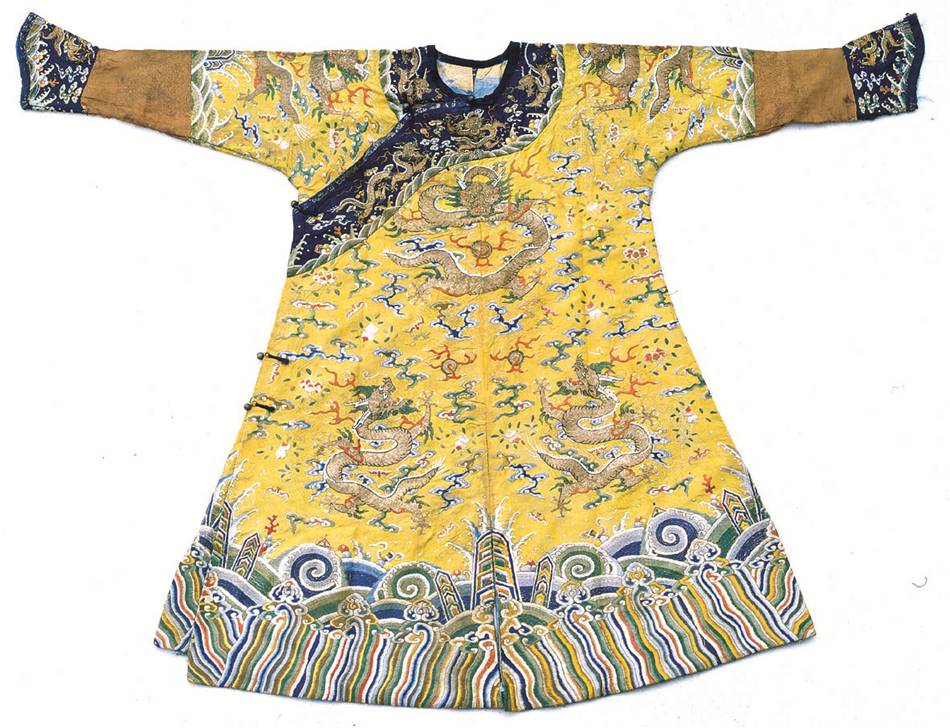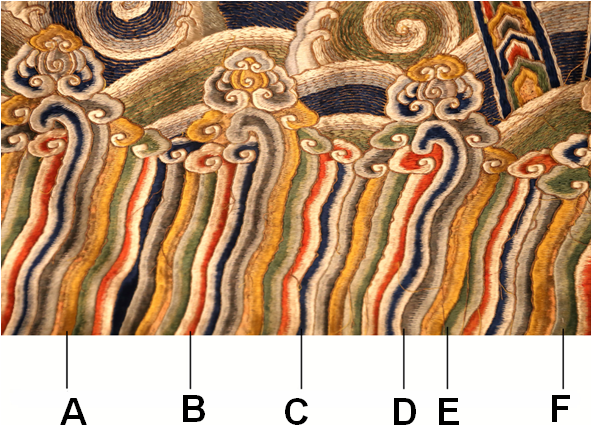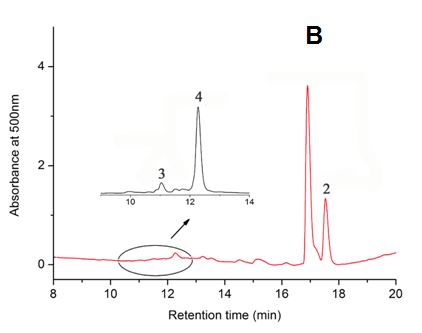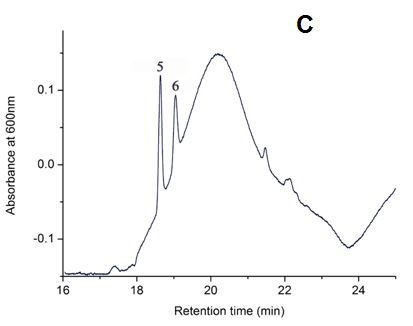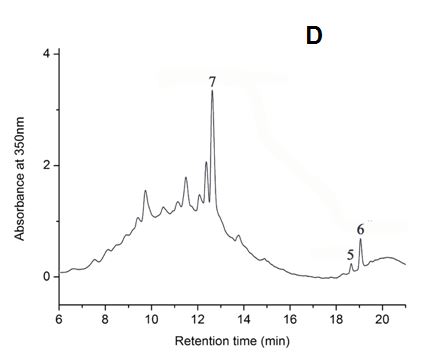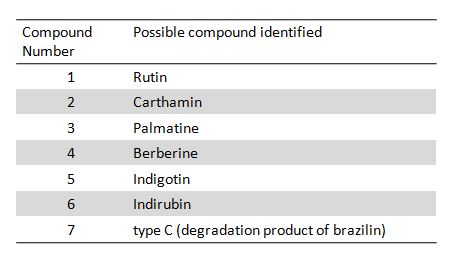Difference between revisions of "CNSM 1858, Small Dragon Robe, China (Qing Dynasty, 1644-1911 CE)"
| Line 24: | Line 24: | ||
== Summary of results == | == Summary of results == | ||
| − | HPLC-MS analysis shows several common dyes were used to dye the Qing dynasty object. Bright yellow threads (part A) were dyed with [http://cameo.mfa.org/wiki/Pagoda_tree_(Styphnolobium_japonicum)_LC pagoda tree buds] due to the fact that a big peak corresponding to rutin is seen in HPLC profile of the yellow dye. Safflower was identified in red threads (part B), along with ''Phellodendron spp'', which is in good agreement with a dyeing recipe recorded in Tian Gong Kai Wu (Explotation of the Works of Nature, written by Song Yingxin in 1637). Indigo can be used not only to produce a blue color (part C), but also to produce various green colors by overdyeing with pagoda tree buds (part E) or Phellodendron spp.,(part F) Purple threads (part D) were dyed with a mixture of sappanwood and indigo. | + | HPLC-MS analysis shows several common dyes were used to dye the Qing dynasty object. Bright yellow threads (part A) were dyed with [http://cameo.mfa.org/wiki/Pagoda_tree_(Styphnolobium_japonicum)_LC pagoda tree buds] due to the fact that a big peak corresponding to rutin is seen in HPLC profile of the yellow dye. [http://cameo.mfa.org/wiki/Safflower_(Carthamus_tinctorius)_LC Safflower] was identified in red threads (part B), along with ''Phellodendron spp'', which is in good agreement with a dyeing recipe recorded in Tian Gong Kai Wu (Explotation of the Works of Nature, written by Song Yingxin in 1637). Indigo can be used not only to produce a blue color (part C), but also to produce various green colors by overdyeing with pagoda tree buds (part E) or Phellodendron spp.,(part F) Purple threads (part D) were dyed with a mixture of sappanwood and indigo. |
== HPLC profile == | == HPLC profile == | ||
Revision as of 11:44, 18 January 2018
Artifact Information
Small Dragon Robe, China (Qing Dynasty, 1644-1911 CE). Height: 94 cm Width: 136 cm
Exisiting dragon robes are far from rare. This one however, really is, due to its small size. The dragon motifs are exquisitely worked on a yellow silk ground with gold couching technique while polychrome silk threads are used for clouds, bats and flowers. The most plausible explanation for a dragon robe of this size is that it is tailored specially to fit a child emperor. (depicted by Yan Xue, translated by Huiwei Shen).
China National Silk Museum, Hangzhou, China. #1858.
Analytical instrumentation and procedures
The dye was extracted from a thread (0.2-1mg) of the archaeological object in a solution of pyridine/water/1.0M oxalic acid as described by Mouri and Laursen [1]. The solution was evaporated to dryness under a nitrogen flow, and redissolved in 50 μL MeOH/H2O (1/1); subsequently, 20 μL of dye solution was injected onto HPLC column.
An extract was analyzed on an HPLC-PDA-MS system consisting of a Shimadzu LC-20A high performance liquid chromatography, a Shimadzu SPD-M20A photodiode array detector and a Thermo LTQ XL ion trap mass spectrometer. The separation was performed on a Shim-pack XR-ODS column (3.0 mm × 75 mm, 2.2-μm particle size) and a Phenomenex Luna C18 column (2.0 mm × 150 mm, 3-μm particle size). Columns were eluted with acetonitrile-water gradients containing 0.1% formic acid at a flow rate of 0.3 mL/min.
Summary of results
HPLC-MS analysis shows several common dyes were used to dye the Qing dynasty object. Bright yellow threads (part A) were dyed with pagoda tree buds due to the fact that a big peak corresponding to rutin is seen in HPLC profile of the yellow dye. Safflower was identified in red threads (part B), along with Phellodendron spp, which is in good agreement with a dyeing recipe recorded in Tian Gong Kai Wu (Explotation of the Works of Nature, written by Song Yingxin in 1637). Indigo can be used not only to produce a blue color (part C), but also to produce various green colors by overdyeing with pagoda tree buds (part E) or Phellodendron spp.,(part F) Purple threads (part D) were dyed with a mixture of sappanwood and indigo.
HPLC profile
References
[1] Mouri C, Laursen R. Identification and partial characterization of C-glycosylfalvone markers in Asian plant dyes using liquid chromatogrphy tandem mass spectrometery. Journal of Chromatography A 2011; 1218: 7325-30.
